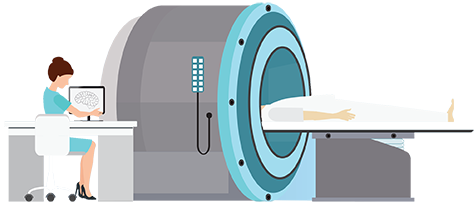

Radiologic technologists take internal images of the body by using ionizing radiation that creates black-and-white pictures of specified areas. These images can tell physicians many things about the body. The work of radiology techs may indicate if a disease or illness is present, but they can also let doctors know if a break or fracture in a bone has occurred, for example. As with many health care careers, the skills of radiologic technologists are relatively in demand, according to the Bureau of Labor Statistics.
There are different types of jobs in radiology, and depending on your interests and how much time you are interested in committing to your education, you might have multiple choices for which profession you’d like to pursue. These jobs include:
Below is a list of some of the schools in Arizona that offer radiology technologist programs and related degrees and certificates, according to the National Center for Education Statistics:
The BLS reports that an associate degree is typically the entry-level education required in order to pursue a job in the field, though different radiology professions might require another level of education, such as a postsecondary certificate or even a bachelor’s degree. There are many different radiologic technologist schools in Arizona, and students may want to enroll in one that is accredited through the Joint Review Committee on Education in Radiologic Technology (JRCERT). Licensing for employment is required in many states and graduation from an accredited program is often one of the licensing requirements.Students typically gain many clinical skills and are enrolled in a clinical, hands-on course every semester of their program. Curricula may vary by school, but the topics students in radiology schools in Arizona cover are often similar. Classes that students could enroll in include:
Students may also be required to take courses in human anatomy and physiology as prerequisites to enrollment and to maintain a certain grade point average in their radiologic technologist classes. After completing their education, students can apply to take the national certifying exam offered through the American Registry of Radiologic Technologists (ARRT). This exam is used in the licensing process for many states, and it may be mandated in some states.
According to the American Society of Radiologic Technologists (ASRT), passing the ARRT or the state exam is part of the licensing process in Arizona. Once a student is licensed, that license is good for two years and the renewal process requires 24 hours of continuing education every two years. Arizona does not allow for reciprocity with other states, meaning that any radiologic technologist wanting to work in the state needs to meet the state licensing requirements there.
Wages may vary by employer and location, but the table below can give you some idea of what the potential pay for radiology professions might be in the state of Arizona. It shows the number of people employed in each job, as well as the average annual salary, according to the BLS.
| Career | Total Employment | Annual Mean Wage |
|---|---|---|
| Cardiovascular Technologists and Technicians | 760 | 54,580 |
| Diagnostic Medical Sonographers | 1,850 | 80,710 |
| Magnetic Resonance Imaging Technologists | 930 | 74,380 |
| Nuclear Medicine Technologists | 280 | 82,440 |
| Radiologic Technologists | 3,560 | 64,120 |